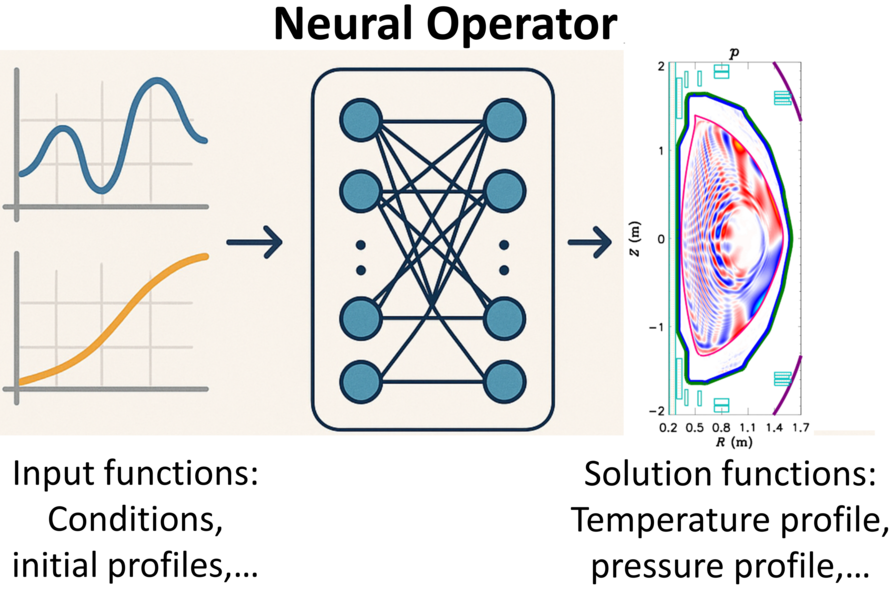High-fidelity simulation with M3D-C1 is a critical tool for tokamak design and operation, particularly for disruption prediction and mitigation optimization. However, the significant computational overhead makes parametric optimization extremely time-consuming. Neural operators, as an advanced neural network architecture, have recently attracted growing attention for solving PDEs due to their strong generalization capabilities. However, like other ML-based approaches, neural operator methods also face challenges such as limited data availability, accuracy degradation, and “black-box” concerns.

The objective of this project is to develop a fully physics-constrained, neural operator-based hybrid algorithm to accelerate M3D-C1 simulations. This method is designed to be trained on a limited dataset while remaining capable of generalizing to a wide range of relevant parameter configurations. The outputs from the neural operator will be passed to the M3D-C1 solver for further refinement, ensuring full-order accuracy and enabling uncertainty propagation analysis. The developed framework aims to significantly reduce computational costs for Tokamak disruption mitigation optimization, especially for next-generation devices like SPARC.
In collaboration with Dr. Cesar Clauser from MIT, this algorithm will first be tested on simplified thermal quenching problems before being applied to the full extended MHD equations. Preliminary investigations show that the approach can effectively accelerate transport equation computations without compromising accuracy.
This project is led by postdoctoral associate Qiyun Cheng, under the supervision of Dr. Cristina Rea. Collaborators include Dr. Cesar Clauser (MIT), Dr. Nathaniel Ferraro (PPPL), and Dr. Ryan M. Sweeney (CFS).